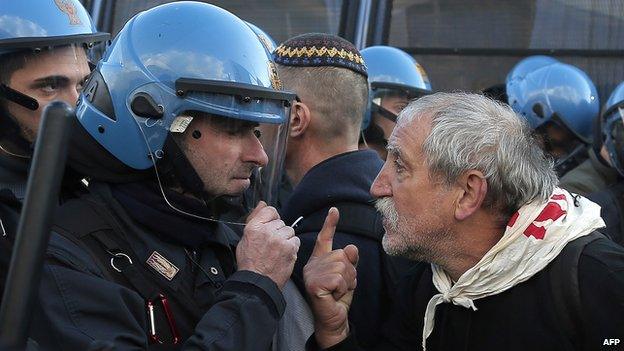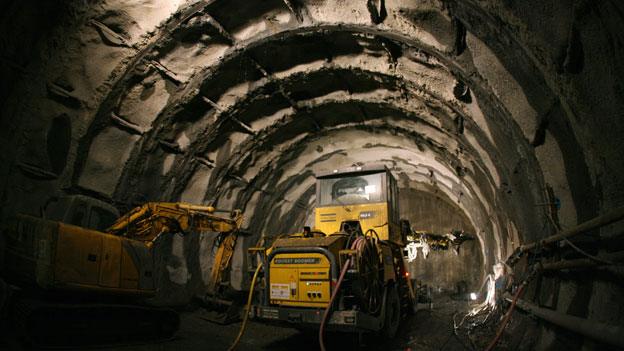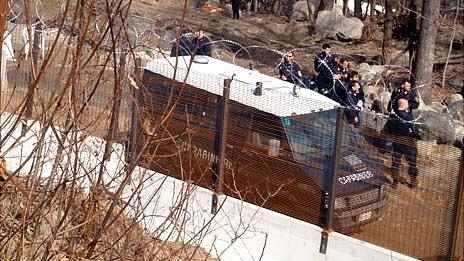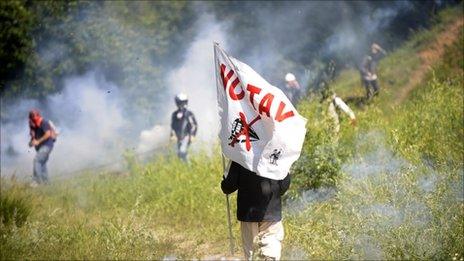EU probes fraud claim over Lyon-Turin rail project
- Published

Construction of the long Tav rail tunnel under the Alps is very controversial
The EU's anti-fraud office, Olaf, has opened an investigation into the Lyon-Turin high-speed rail project, after Green MEPs alleged serious misspending.
Olaf said it would seek to "clarify whether any fraud or irregularity has occurred that can prejudice the EU's financial interests".
In 2012 the French Court of Auditors estimated that the project's total cost, external would rise to €26bn (£19bn; $29bn).
Green MEPs complained to Olaf, calling the project a waste of public money., external
In 2013 construction work began on a 57km (35 mile) tunnel through the Alps for the Lyon-Turin line. The project - known as Tav (Treno Alta Velocita) - is behind schedule and there have been big demonstrations against it.

Protesters against the Tav confronted police in Susa, Italy, in 2013
EU co-funding
The European Commission has agreed to provide 40% of the €8.5bn cost of the tunnel construction, the rest coming from France and Italy. Both countries have until 26 February to submit bids to the Commission for that EU funding, the Euractiv news website reports, external.
That EU funding will come out of a budget of €23.3bn for European transport infrastructure, earmarked for 2014-2020.
In a statement to the BBC, Olaf said there was no set termination date for the fraud investigation.
It also said the investigation "does not mean that the persons/companies involved have committed an irregularity/fraud", but it was acting after "a preliminary analysis of the allegations received".
The allegations against Tav came from two French Green MEPs - Michele Rivasi and Karima Delli.
The French Court of Auditors complained that Tav had not been budgeted strictly enough for such a large-scale project.
The court said that estimates of future rail traffic back in the 1990s, when the project was launched, now looked highly inaccurate. It said the saturation point for existing rail infrastructure was unlikely to be reached before 2035.
- Published15 February 2013

- Published10 April 2012

- Published3 July 2011
